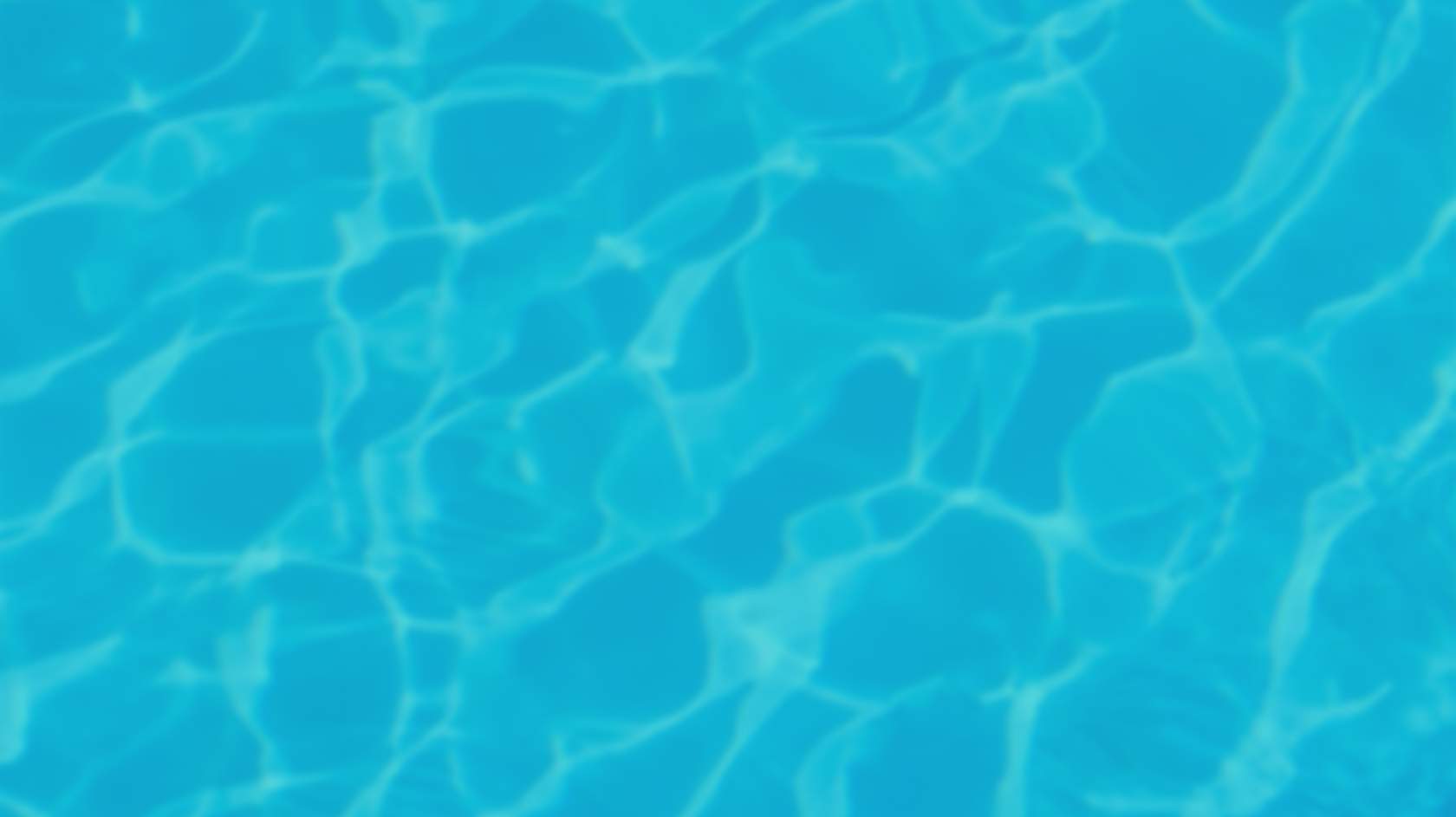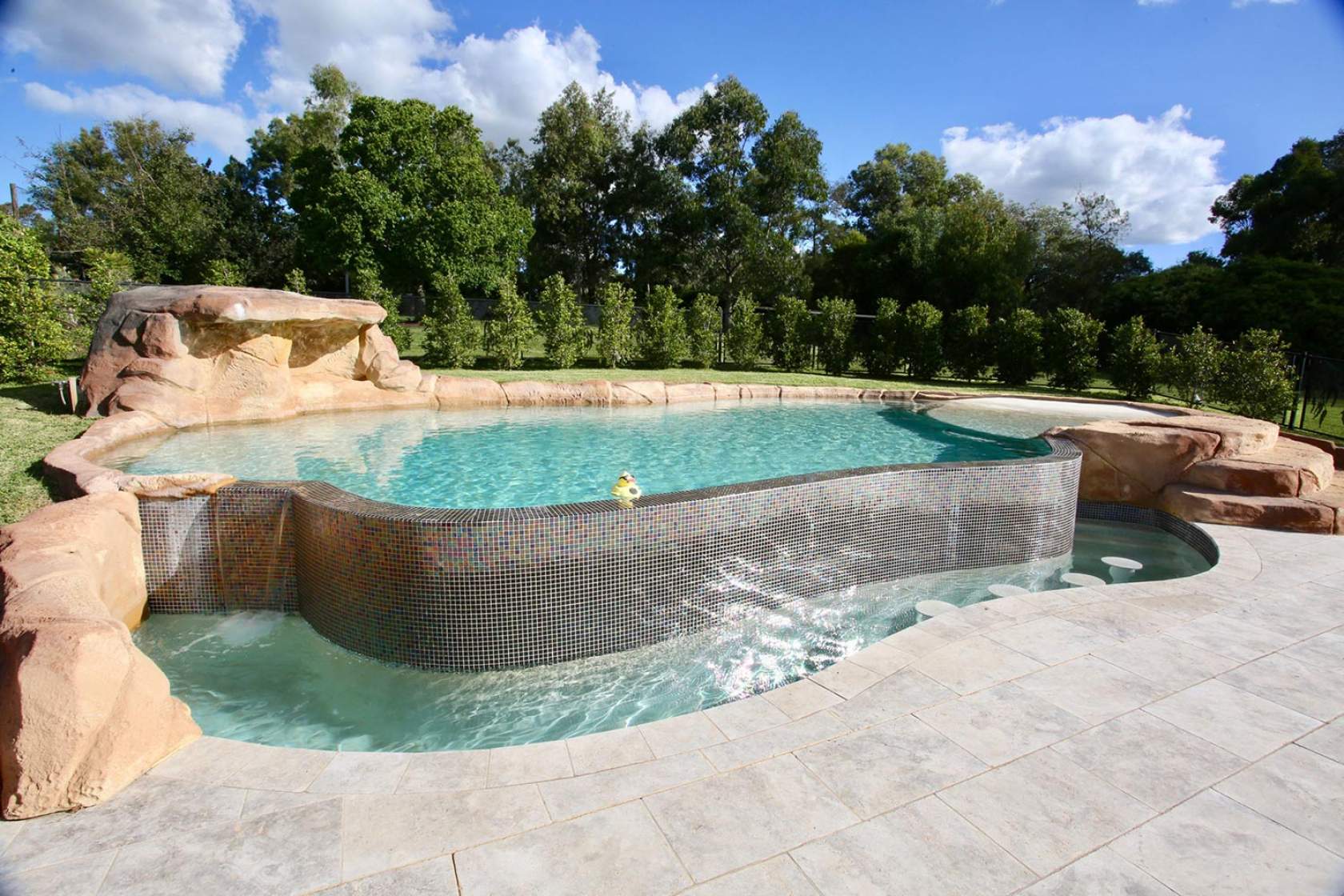

Under the Sun
Australia’s solar power uptake rates are among the highest in the world, with some homeowners choosing to capitalise on that investment and add pool heating into the mix.
Australia’s dry, sunny climate lends itself to swimming pool solar heating, with many homeowners taking advantage of plentiful sunshine to power their homes and save on electricity.
How it works
The specifics of the type of solar system you choose will vary, but the basic principles are the same. pool water is circulated through the solar collector — a series of tubes generally mounted on the roof — where heat is absorbed and heated water is returned to the pool. The collector is constructed from either EPDM rubber or PVC/TPR material and is usually supplied in multiple tube strips or panels.
Advantages
Harnessing the power of solar energy is an economical pool heating solution, allowing you to increase pool usage by up to four months, depending on your location. Beyond the initial outlay, annual running costs for a solar system are minimal.
Sizing, location and orientation
Obviously, the amount of heat absorbed is heavily dependent on the size, location and orientation of your solar system. There is a little more calculation and pre-planning required for solar heating than other alternatives: size and area, positioning and the type of solar controller to use.
Size or area
The size of the solar collector is a major determiner of overall system effectiveness. It is usually expressed in square meterage and, as a general rule, relates to the surface area of your pool.
There is no hard-and-fast rule, as a range of variables will determine the square meterage required. These variables include local climate, shading of the roof or pool, type, colour, slope and orientation of the roof, wind protection and the collector type. Recommendations generally come with the proviso that they apply only in ‘ideal’ conditions.
Australian standard AS 3634-1989: Solar heating for swimming pools provides guidance for the minimum acceptable collector area in ideal conditions. This varies by geographic location and uses a simple estimation. A rule of thumb is at least 60% of pool surface area (length x width) for FNQ/NT, 70% for Brisbane, Alice Springs/parts of WA and 80% for NSW, act, Vic, SA, Tas and Perth.
When higher than average water temperatures or a significantly longer swimming season are the desired goals, opt for a larger solar collector area — equivalent to 80% of the pool surface. It is important to note that ‘area’ in this context means the actual collector strip area, not the roof surface area.
AS3634 details solar collector calculation methods as follows: Nx (W+D), where N = number of tubes, D = tube diameter and W = width between tubes. The maximum web width that can be used is no more than one tube diameter per tube.
Location and orientation
Other than in flat-roof installations, solar collectors should be placed in a north-facing position where possible. If the site does not permit a north-facing orientation, the collector area should be increased to compensate. Ideally, the collector will be located in a position free from shade caused by trees, neighbouring houses and other structures for at least six hours per day.
Things to know and look for
Pumping requirements
A pump is required to circulate water through the solar system. You can elect to use the existing pool pump or opt for a dedicated unit. When using the existing pump, you will need to ensure the following conditions can be met:
The required rate of turnover of the pool water for filtration purposes must be maintained.
The operating pressure of the filter must not be increased above the manufacturer’s maximum pressure by the addition of the solar circuit.
The pump must have sufficient capacity to handle the static head and friction losses introduced by the addition of the solar collector circuit.
The average residential solar installation requires a minimum flow rate of around 100 to 200 litres per minute to operate effectively. In most circumstances this means that a dedicated solar pump is required. When assessing pump alternatives, check that the minimum design flow rate of the solar collector will be met and be aware that this will vary with the diameter of tubing being used.
Circulated water must be strained to avoid blocking the solar collector with dirt and debris. This requires use of a strainer when opting for a dedicated pump.
Solar controllers
There is little use for timeclock control in a solar heating system, as there is no guarantee of sunshine at any particular time of day. Temperature sensing control devices should be used, allowing operation of the solar pump system only during times when heat can be gained, as circulating water through a cold collector will cool the pool at a faster rate than it can be heated.
Handover and documentation
Once installed by a licensed electrician, you should receive documentation that confirms the system has been installed and commissioned according to local requirements. Handover documentation should include:
A list of all major system components, including the size and make of solar collector, make and model of the control system, components and pump.
Copies of all warranties as issued by the component manufacturers, along with warranties issued by the installer.
Operating, preventive maintenance and service instruction documents that describe start-up, normal running and shutdown procedures.
A record of the date of installation and the name and address of the installer.
A final note: Using a pool blanket will increase the benefits of solar pool heating as it traps in the heat and additionally minimises evaporation. Covers and blankets are available in a range of styles from simple manual types through to fully automated options.
